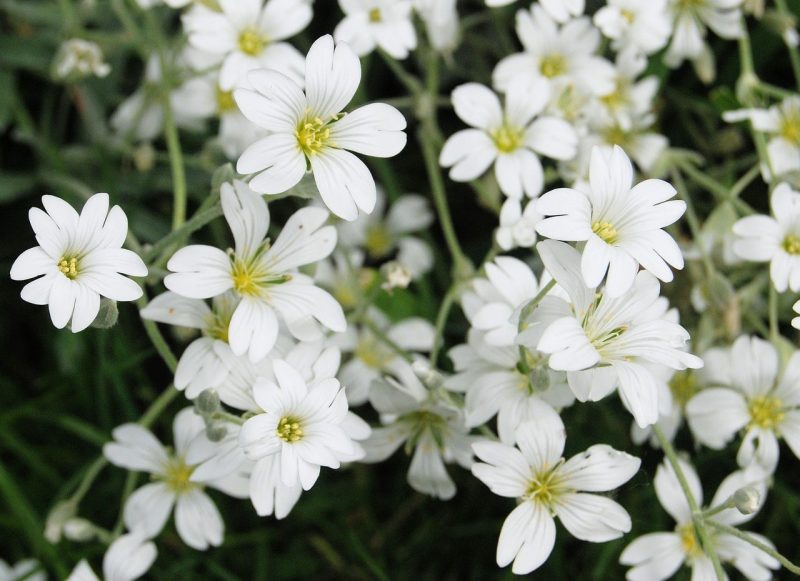If you’re interested to learn how to grow gypsophila, you’ll be pleased to know that it only takes three steps. gypsophila or baby’s breath is undoubtedly one of the best flowering plants because they can make any space look livelier and produce excellent cut flowers. However, it’s worth noting that gypsophila flowers tend to be more sensitive compared to other species.
Baby’s breath flowers will easily get damaged from stressful conditions due to unpredictable and extreme climates. Therefore, you can consider growing gypsophila in the greenhouse to ensure that your plants stay healthy with eye-catching blooms. More so, it’s more likely for the plants to develop when you start them in the greenhouse.

How To Plant Gypsophila For Beginners
Step #1. Propagation
The first step to growing gypsophila is ensuring that you have healthy seedlings. There are various propagation methods for gypsophila, ranging from cuttings to seeds. You can opt for the former if you want to guarantee the resulting characteristics you’ll get.
Just choose a healthy mature baby’s breath plant as your source of cuttings. On the other hand, you can also grow gypsophila from seeds. They will grow well on a tray with a moist medium, but you must spread a thin layer of soil over them.
To ensure sprouting, cover the container with plastic and place the plants somewhere warm. In both propagation methods, you’ll have a higher chance of rooting gypsophila in the greenhouse because it protects them from environmental challenges and extremes. Then, you can plant the seedlings outdoors when the weather is more ideal.
Step #2. Transplanting
You can opt to start the gypsophila seeds by the end of winter in the greenhouse. This way, they have grown to the right size for outdoor transplanting. Similar to most flowering plants, gypsophila thrives in an area with well-draining soil and full sun.
These conditions are conducive for its blooming period in summer to fall. Therefore, remember to make the necessary amendments to the soil to improve its water drainage and retention, pH level, structure, and nutrients. More so, you want an area out of the harsh wind that can damage the young baby’s breath plants and their flowers.
You can prepare the new site by digging holes around two inches deep with some fertilizer and compost. Aim to have around 36 inches of space among the plants, depending on how you want your garden to look like. Just remember to allocate enough room for their growth and proper air circulation.
Plant the seedlings so that the growth above the roots is an inch below the ground. Stabilize the plant into place and make sure that the crown and root are under the soil. To help the plants recover quickly, water them well but not to the point that the area has standing water.
Step #3. Maintenance
Once you have planted the gypsophila plants, you should feel at ease because they are relatively low maintenance. However, they should still be well-hydrated, and you can fertilize them to boost flowering. You don’t need to frequently water gypsophila, and lightly feeding them in spring to support the new growth would suffice.
Should you prune gypsophila? Baby’s breath plants would benefit from cutting back, especially in the middle of the summer. This will maintain a neater look, and you can use this opportunity to remove the unhealthy looking parts.
More so, this will ensure stunning blooms from summer to fall. The good news, however, is that you don’t need to divide baby’s breath plants. Shearing is enough to keep them from overgrowing because the roots are more likely to get damaged if you divide them.
How To Care For Gypsophila
Location
gypsophila thrives best in slightly alkaline soil, so always test your site and make the necessary adjustments. You must also ensure that the plant gets at least six hours of light for optimal blooms. Lastly, the soil should drain well to avoid diseases like rot.
Water and fertilizer
Experienced gardeners typically water gypsophila by deeply watering every two weeks, but you shouldn’t feel scared of drought since these plants can survive dry conditions. On the other hand, you can feed them monthly throughout the growing season with an all-purpose fertilizer according to label instructions. As mentioned earlier, baby’s breath plants don’t have high requirements for water and fertilizer.
Deadheading and staking
gypsophila will benefit from deadheading any time to help it form more blooms. You can also stake these plants as they tend to get tall and require support for their stems. This way, your plant will not turn leggy as it is growing.
Common problems
According to the University of California, conditions like warm temperatures, moist areas, and poor air circulation can cause diseases like rot, flower blight, and bacterial gall. Therefore, always be diligent in maintaining your gypsophila and its environment. You must also practice proper sanitation to avoid encouraging infestations.
Conclusion
If you want to have a flowering plant that would be useful both in the garden and in a bouquet, you can consider having the gypsophila or baby’s breath. You can easily learn how to grow gypsophila in three easy steps and choose a propagation method that is comfortable for you. Start gypsophila in the greenhouse via seeds or cuttings and then transplant them once the weather outdoors is less challenging.
Upon planting, you shouldn’t face many drawbacks in growing and maintaining baby’s breath. They require light watering and fertilizing, and you can cut back the plants for healthier blooms and rejuvenation. Overall, gypsophila is not a demanding plant and is very easy to grow, even for newbie gardeners.
